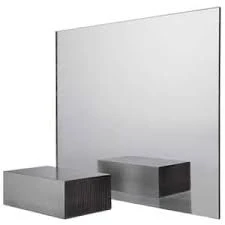

The Charm of Bamboo Pattern Glass
Bamboo pattern glass has emerged as a distinctive and sought-after design element in contemporary decor and architecture. Its elegant yet rustic aesthetic resonates with those who appreciate the beauty of nature and the tranquility it embodies. This article explores the history, production, and versatile applications of bamboo pattern glass, shedding light on why it has become a popular choice in homes and commercial spaces alike.
Historical Background
The inspiration for bamboo pattern glass can be traced back to traditional Asian art and architecture, where bamboo has long been revered for its strength, flexibility, and graceful appearance. In many cultures, bamboo symbolizes resilience and versatility, making it a fitting motif for glass design. With advancements in glass-making technology, artisans and designers began to experiment with incorporating natural patterns into glass, resulting in the stunning bamboo designs we see today.
Production Process
The creation of bamboo pattern glass involves a meticulous process that combines craftsmanship and innovation. Typically, artisans use a technique called etching or sandblasting to carve intricate bamboo motifs onto the surface of glass panels. This process not only enhances the aesthetic appeal of the glass but also creates a tactile experience that adds depth to its visual impact. The transparency of the glass allows light to play through the bamboo pattern, casting beautiful shadows and creating dynamic lighting effects.
Alternatively, other methods, such as screen printing and glass fusing, can also be employed to produce bamboo patterns
. Each technique contributes its unique charm and character, making bamboo pattern glass a versatile option for various applications.Versatile Applications

Bamboo pattern glass finds its place in an array of settings, including residential, commercial, and artistic applications. In residential spaces, this type of glass is often utilized in interior design, particularly for sliding doors, room dividers, and decorative windows. These elements not only provide privacy but also allow natural light to flow, creating a serene environment.
In commercial spaces, bamboo pattern glass can be seen in office partitions and storefronts, where it projects a modern yet inviting ambiance. Restaurants and cafes frequently incorporate this design into their decor to evoke a sense of calm and connection to nature, enhancing the overall dining experience.
Moreover, bamboo pattern glass is a popular choice for artistic installations and decorative pieces. Artists and designers use this medium to create stunning mosaics and sculptures that celebrate the beauty of nature, further blurring the lines between art and functionality.
Environmental Considerations
As society becomes increasingly aware of environmental issues, the demand for sustainable and eco-friendly materials has grown. Bamboo itself is a renewable resource, which aligns with the principles of sustainability. When combined with eco-conscious glass production methods, bamboo pattern glass can be an environmentally friendly choice, appealing to those who prioritize green living.
Conclusion
In conclusion, bamboo pattern glass is more than just a design trend; it symbolizes a harmonious blend of nature and innovation. Its rich history, intricate craftsmanship, and versatile applications make it a favored choice among designers and homeowners alike. By embracing the beauty of bamboo in glass design, we not only enhance our living and working spaces but also foster a deeper connection to the natural world. Whether used in a modern home or a bustling commercial establishment, bamboo pattern glass continues to inspire with its elegance and charm.